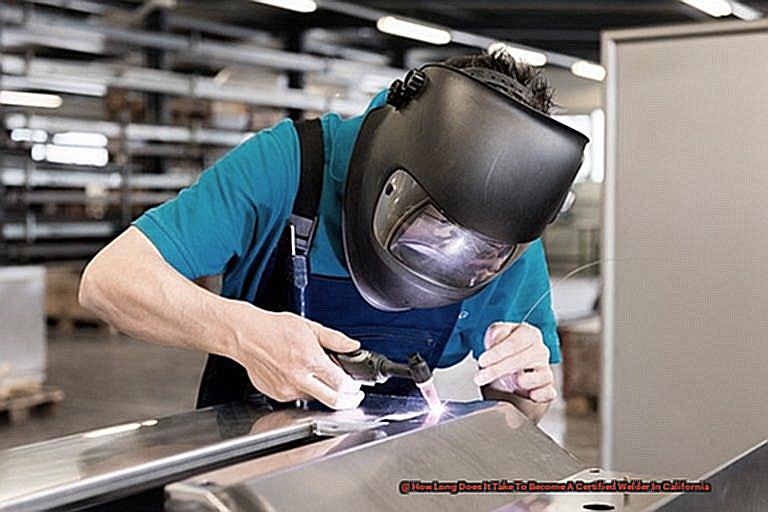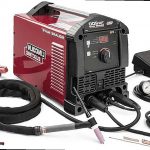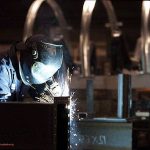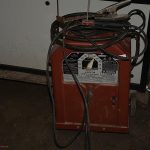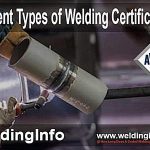Are you dreaming of a career as a welder in the beautiful state of California?
The path to becoming a certified welder in California is an exhilarating and fulfilling one, requiring determination, diligence, and a love for working with metal.
In this blog post, we will walk you through the process of obtaining your certification in welding, from selecting the perfect training program to acing the certification exam. Whether you are just starting out or seeking to enhance your skills, this comprehensive guide has all the details you need to embark on your journey as a certified welder in California.
So, grab your trusty welding mask and let’s dive in.
How to Get Your AWS Welding Certification in California
Contents
- 1 How to Get Your AWS Welding Certification in California
- 2 Top Welding Schools for Certification in California:Welding Certification Programs
- 3 Best Welding Schools in Northern California
- 4 Best Welding Schools in Southern California
- 5 The 52 Top Welding Schools for Certification in California:Contact Info and Locations
- 6 Underwater Welding Schools in California
- 7 Welding Employment Outlook in California
- 8 The Best Welding Supplies Online for Students
- 9 Important Welding Safety Tips
- 10 Looking For Welding Information On States Bordering California?
- 11 Conclusion
Have you ever dreamed of becoming a highly skilled welder in the bustling state of California? If so, you’re not alone. The art of welding is in high demand, and obtaining certification from the esteemed American Welding Society (AWS) can unlock a world of job opportunities. As an expert on the subject, I will guide you through the intricate process of obtaining your AWS welding certification step by step.
Step 1: Master the QC7 Standard and its supplements
To begin your journey towards becoming a certified welder, it is essential to familiarize yourself with the complex QC7 Standard and its supplements. This standard outlines the rigorous requirements for obtaining certification in California, including the various levels of expertise available.
Step 2: Connect with an Accredited Test Facility
Once you have thoroughly studied and comprehended the QC7 Standard, it’s time to connect with an Accredited Test Facility (ATF) representative at a facility near you. The ATF representative will serve as your guiding light throughout the registration process for the challenging test ahead.
Step 3: Bring your QC7 Standard when taking the exam
As you embark on your certification test, it’s crucial to have your trusty QC7 Standard by your side. This document serves as undeniable proof that you have diligently studied and understood the stringent requirements for becoming a certified welder in California.
Step 4: Ace the test
The AWS certification test is comprised of both written and practical exams. The written portion evaluates your knowledge of welding theory and safety protocols, while the practical exam assesses your ability to execute various welding techniques flawlessly. To increase your chances of success, dedicate yourself to studying diligently and practicing your welding skills regularly.
Step 5: Submit your application and payment
After passing the challenging test, it’s time to submit your application, qualifications test record, and payment to the ATF.
Top Welding Schools for Certification in California:Welding Certification Programs
From esteemed private institutions like the Welding Certification Center and Cal-Trade Welding School to accredited facilities such as SoCal Welding Institute and American Fabrication Academy, there is an array of options to choose from.
But why should one consider a career in welding? Recent studies have shown a decline in interest for trade careers in the United States, resulting in a high demand for skilled workers. This translates to ample job opportunities and stable employment for welders. Moreover, with the rapid advancements in technology, welding has evolved into a highly specialized field, offering a diverse range of exciting career paths.
For those embarking on their welding journey, the Welding Certification Center stands out as the only private school licensed by the State of California. Their curriculum emphasizes hands-on learning and caters to individuals of all skill levels. The Welding Skills Test and Training Center also offers introductory courses, expedited programs, and flexible schedules for seasoned welders.
Cal-Trade Welding School presents another excellent option, with limited information available on their website but an invitation for prospective students to contact them directly for more details on current job opportunities. SoCal Welding Institute prides itself on being an AWS accredited testing facility, providing practical training and a fast-track option for those looking to enter the workforce swiftly. However, they do require proof of COVID-19 vaccination for enrollment.
The Fab School specializes in metal fabrication and welding certifications, offering an accelerated curriculum with hands-on projects tailored to apply learned skills. CTM Welding also provides courses and workshops for individuals of all experience levels, including refresher workshops for professional welders seeking to take certification exams.
Best Welding Schools in Northern California
The Golden State is renowned for its breathtaking landscapes, vibrant cultures, and bustling cities. But did you know that it is also a sought-after destination for aspiring welders? With a projected 6% job growth rate and a higher median salary compared to other regions in the US, California is an ideal place to launch your welding career. In this article, we will delve into the perplexing world of welding schools in Northern California and help you make an informed decision about pursuing this rewarding profession.
Accredited Institutions
The first step towards becoming a certified welder is to attend an American Welding Society (AWS) accredited welding school. Luckily, there are 52 top-notch welding schools in California that have been approved by AWS’s SENSE Accreditation Program. These schools offer comprehensive programs in various areas, including the highly specialized fields of pipe welding and underwater welding.
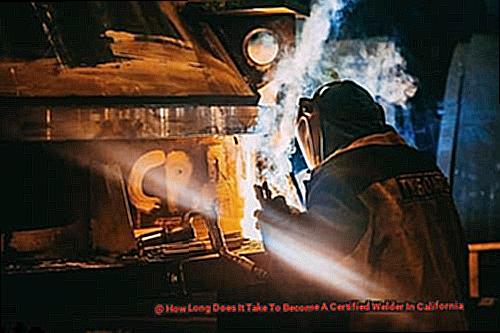
Admission Requirements
The duration of a welding program may vary, but it usually takes less than two years to complete. Admission requirements for these programs typically include a high school diploma or GED. However, some schools only require completion of tenth grade, making it accessible to those who may not have completed their high school education but possess a burning desire for welding.
Options in Northern California
For individuals seeking specifically for welding schools in Northern California, there are five esteemed options that offer pipe welding certification: Butte College, Shasta College, Sierra College, Yuba College, and American River College. Similarly, there are four schools listed for those interested in Southern California.
Employment Outlook
The employment outlook for welders in California is expected to surge by 6% from 2016 to 2026, with an average median salary of $43,840 per year compared to the national median average of $39,390 per year.
Best Welding Schools in Southern California
With its stunning beaches, vibrant cities, and thriving industries, Southern California is the perfect place to pursue welding. But with so many options, how do you choose the best welding school for you? Fear not, we’ve got you covered. After extensive research and personal experiences, we have compiled a list of the top welding schools in Southern California.
John Lopez Welding School – Bakersfield
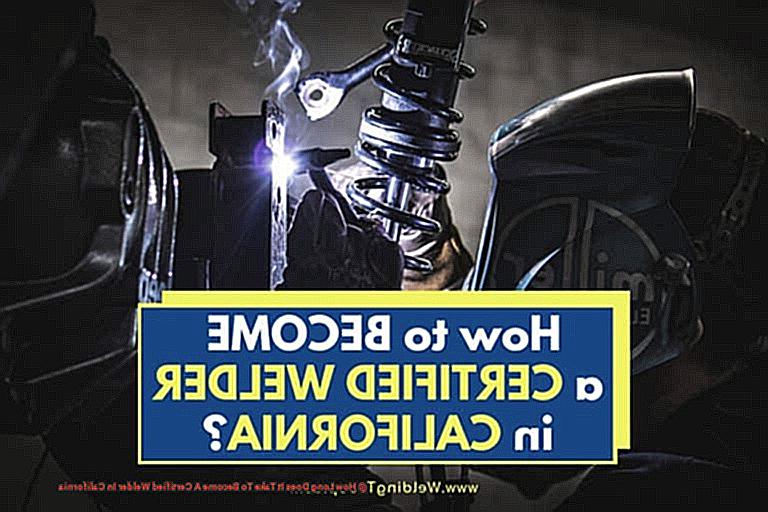
Situated in Bakersfield, California, the John Lopez Welding School offers comprehensive training programs for budding welders. Equipped with cutting-edge facilities and seasoned instructors, the school provides hands-on training in various welding techniques, including MIG, TIG, and stick welding. They also offer specialized courses in pipe welding and fabrication. With small class sizes and flexible schedules, students receive personalized attention and can complete their training at their own pace.
Welding Skills Test and Training Center – Rancho Cucamonga
The Welding Skills Test and Training Center in Rancho Cucamonga is another top choice for welding education in Southern California. Their diverse course offerings include basic welding skills, advanced techniques, and specialized certifications. Designed to prepare students for real-world job situations, their programs are highly sought after by employers. They also provide job placement assistance to jumpstart graduates’ careers.
Elite Welding Academy – Southern California
Known for its rigorous training programs that prioritize hands-on experience and practical skills, Elite Welding Academy in Southern California is a popular choice among aspiring welders. They offer courses in MIG, TIG, stick, and pipe welding, as well as blueprint reading and fabrication. The instructors at Elite Welding Academy are certified welders with extensive industry experience, providing students with valuable insights and tips for success.
The 52 Top Welding Schools for Certification in California:Contact Info and Locations
These schools offer hands-on experience, flexible schedules and prices, job placement assistance, and specialized training in metal fabrication and welding to prepare you for a successful career in the industry.
Whether you’re a novice or a seasoned welder seeking certification, our list of the 52 best welding schools for certification in California has you covered. Get ready to ignite your passion and dive into the world of welding with the help of these reputable institutions.
Located in Los Angeles County, The Welding Certification Center is a private school that offers a variety of courses for all skill levels. They are transparent about their costs and accredited by the State of California, ensuring that you receive quality education and training.
For those seeking flexibility in their training, The Welding Skills Test and Training Center is the perfect choice. They offer introductory courses, brush-up workshops, and fast-tracked training for experienced welders. Additionally, they have flexible schedules and prices based on your certification needs.
Cal-Trade Welding School not only offers a range of courses including combination welding, blueprint reading, and AWS Inspector classes, but also provides job placement assistance upon course completion. This makes it easier for students to kickstart their welding careers.
For personalized training that meets industry workforce demands, head to SoCal Welding Institute. As an accredited testing facility and state-approved welding school, they offer individualized training for students. And if you’re looking to accelerate your education, they have an option available for that as well.
If metal fabrication sparks your interest, The Fab School is the place for you. They offer day or night classes to accommodate students’ schedules and have an accelerated curriculum with hands-on projects to apply learned skills. This makes it an ideal fit for those who learn best by doing.
Underwater Welding Schools in California
And with the commercial diving industry on the rise, there’s no better time to take the plunge into this thrilling and well-paying profession. But with a multitude of factors to consider – such as location, tuition, financial aid, and certifications – how do you choose the ideal school for you? Fret not, my friend. Let me be your guide in discovering the top underwater welding schools that California has to offer.
First things first – why California? Well, according to recent data, the commercial diving industry ranks as the sixth fastest-growing career in the US. And with its picturesque coastline and booming marine industry, California presents a plethora of job opportunities for certified underwater welders. Not to mention, it is also home to some of the premier underwater welding schools in the nation.
So, let’s dive into our list of exceptional schools that will equip you with the necessary skills and certifications to thrive as an underwater welder.
National University Polytechnic Institute (NUPI)
Situated in San Diego, NUPI provides a comprehensive 10-week commercial diving program that covers every aspect of underwater welding – from safety protocols to equipment operation. The program also includes a crucial Welder Performance Qualification test required for certification. The tuition fee is $15,000, and financial aid options are available for eligible students.
Divers Institute of Technology (DIT)
Nestled in San Diego, DIT offers an 8-month program that focuses on both inland and offshore diving. The curriculum includes training in underwater welding techniques and equipment and offers job placement assistance upon graduation. Tuition for this program amounts to approximately $17,500, with additional costs for equipment and living expenses.
Welding Employment Outlook in California
California’s multifaceted industries, including construction, shipbuilding, and manufacturing, are constantly in need of skilled welders to join their ranks. Are you ready to embark on your journey towards becoming a certified welder in California? Allow me to be your guide as we delve into the dynamic realm of welding employment in the Golden State.
Educational and Certification Prerequisites
The path to attaining certification as a welder in California is relatively short but requires unwavering dedication and diligence. A high school diploma or equivalent is required for admission into most welding programs. A strong foundation in math, physics, and chemistry is also crucial for comprehending welding principles and techniques.
To become a certified welder, you must complete a training program from an accredited institution such as the American Welding Society (AWS) or a trade school. These programs can vary from 6 months to 2 years, depending on the level of certification you aim to obtain. Generally, the higher the level of certification, the longer the training program.
Employment Prospects
The employment outlook for certified welders in California is optimistic, with a projected growth of 3% between 2018 and 2028 according to the U.S Bureau of Labor Statistics. This growth is due to the high demand for skilled welders in various industries, particularly in construction and shipbuilding. With a growing emphasis on infrastructure development and renovation projects in California, the demand for qualified welders will continue to escalate.
Anticipated Salaries
Apart from job security and opportunities for advancement, welding employment in California offers competitive wages. As of May 2020, the annual mean wage for welders in California was $49,130 according to the U.S Bureau of Labor Statistics. This means that certified welders in California can expect to earn higher-than-average wages compared to other states.
The Best Welding Supplies Online for Students
Before you can dive into the world of welding, you must arm yourself with top-notch welding supplies. In this article, we will delve into the best online retailers for welding supplies in California, providing you with a seamless start to your certification journey.
Welders Supply Co.
First on our list is Welders Supply Co., an online retailer that offers a plethora of welding equipment and supplies at unbeatable prices. This San Diego-based retailer also has a brick-and-mortar store where students can physically peruse their products before making a purchase. With complimentary shipping on orders exceeding $300, Welders Supply Co. presents students with an affordable option for their welding supply needs.
Baker’s Gas and Welding Supplies, Inc.
Next up is Baker’s Gas and Welding Supplies, Inc., a reputable name in the industry since 193This online retailer boasts top brands like Miller Electric, Lincoln Electric, and ESAB, making it the go-to choice for premium welding supplies. However, what sets Baker’s Gas and Welding Supplies apart is their loyalty program, where students can accumulate points with every purchase and redeem them for discounts on future orders.
Metal Supermarkets
For students seeking specialized welding supplies, Metal Supermarkets is the ultimate destination. This online retailer focuses on metal products and features a diverse range of welding supplies such as rods, wires, and torches. With multiple locations scattered across California, students can also visit their physical stores and consult with knowledgeable staff to procure the best products for their unique welding requirements.
Important Welding Safety Tips
Welding is a highly coveted trade in California, and it’s not hard to see why. With its lucrative pay, job stability, and room for advancement, it’s a career that many aspire to. However, like any job, welding comes with its own set of dangers and risks. As an expert in welding safety, I have compiled a list of indispensable tips to help you stay safe while working with heat and metal.
The most crucial step in welding safety is to utilize a comprehensive checklist. This list should cover all the essential precautions, such as proper protective gear, a safe workspace with adequate ventilation, and equipment that meets industry standards. Whether you’re a seasoned welder or just starting out, following a safety checklist can eliminate potential hazards.
Welding involves handling high heat, voltage, fumes, and sparks
all of which can lead to serious injuries if not handled with care. It is imperative to always wear the appropriate protective gear, including helmets or masks, eye protection that meets ANSI standards, respirators, and gloves/suits/boots. Additionally, it is crucial to ensure a safe workspace with proper ventilation to prevent exposure to toxic fumes and gases.
Organizations like OSHA and ACGIH provide guidelines for workplace safety in the welding industry. It is essential to adhere to these guidelines to minimize the risk of hazards such as UV rays, electric shock, loud noises, UV light exposure to the eyes, toxic fumes/gases, and long-term health effects.
Furthermore, MIG welding requires specific measures to reduce risks. These may include using the correct shielding gas, maintaining the proper distance between the gun nozzle and workpiece, and keeping the gun cable straight to avoid kinks.
Before beginning any project, it is vital to thoroughly inspect your equipment. This includes checking for potential hazards or malfunctions that could jeopardize your safety during welding.
Remember that becoming a certified welder involves education, training, experience, and certification.
Looking For Welding Information On States Bordering California?
Before embarking on this journey, it’s crucial to familiarize yourself with the requirements for becoming a certified welder in these states.
One of the primary prerequisites for becoming a certified welder in any state bordering California is being at least 18 years old and possessing a high school diploma or equivalent. This ensures that you possess the basic education and maturity level necessary to handle the responsibilities that come with being a welder.
Furthermore, completing an accredited welding program or apprenticeship is mandatory. These programs offer hands-on training and education on various welding techniques, safety protocols, and industry standards. It’s essential to note that different states may have specific requirements for these programs, so it’s vital to research and choose one that meets your desired state’s criteria.
After completing your education, passing a written exam and practical skills test is necessary to become a certified welder. These tests evaluate your understanding of welding principles and your proficiency in performing various welding techniques accurately. Some states may also mandate additional certifications for specific welding techniques or materials.
It’s worth noting that California has its own certification exam that all welders must pass to work within the state’s borders. This exam covers California-specific laws, regulations, and safety protocols, making it crucial for welders planning to work in the Golden State.
However, if you’re already a certified welder in California, you may be curious whether you can work in neighboring states without having to go through the certification process again. The good news is that some states have reciprocity agreements with California, allowing certified welders to work in both states without additional testing. For instance, Nevada and Arizona have reciprocity agreements with California for structural steel welding, while Oregon has one for pipelines.
As always, when working as a welder, prioritizing safety is paramount.
Conclusion
The process of becoming a certified welder in California can vary depending on individual circumstances. However, on average, it can take anywhere from 6 months to 2 years to complete the necessary training and obtain certification. This time frame includes both classroom instruction and hands-on experience in welding techniques.
It is important to note that the exact length of time may also be affected by factors such as the type of program chosen, the pace at which the student progresses, and any previous experience or education in welding. Additionally, some individuals may choose to pursue additional certifications or specialize in certain types of welding, which can extend the timeline.
Overall, becoming a certified welder requires dedication and hard work, but the end result is a valuable skill set that can lead to various job opportunities in industries such as construction, manufacturing, and oil and gas.
